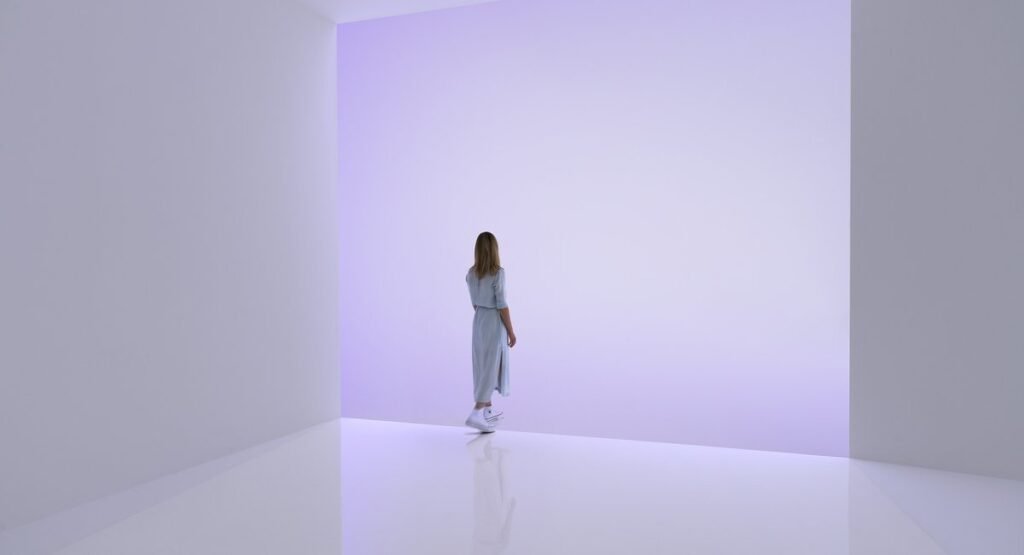On Tuesday afternoon, the line stretched for a block outside the David Zwirner Gallery on 20th Street.
Students at the City University of New York, art lovers in their 20s, and older women in Chanel dresses all wait to see the latest work by Doug Wheeler, an artist known for his experiments in the perception of space and light. was.
Wheeler, who has been exhibiting with David Zwirner since 2010, has a cult following in the art world. Unlike the work of his contemporaries such as James Turrell, Wheeler’s work is not permanently exhibited anywhere. When Wheeler’s work appears in town, it becomes an event for those in the know.
“You can’t explain it, you can’t recreate it,” said Kristin Bell, senior partner at the gallery. “It’s just one of those once-in-a-lifetime moments that actually lives in your memory and people like being at that club. It’s a small club, but it’s a really happy club.”
Some of the visitors knew what they were getting into, but others came in the best possible conditions, completely unaware of what they were about to see.
“I heard it was really cool there,” said Baruch College freshman Nathaniel Umarjeet, who was there on a field trip for his class “Art in New York City, 1900-Present.”
The most helpful thing I can say about Wheeler’s “Day Night Day,” which opened at the gallery last month: You should definitely visit. If you don’t know the artist well yet, it’s better not to do any research beforehand.
“You’ll be really surprised,” said Sarah Agababayeva with a big smile as she emerged from the exhibition hall. “I looked it up and it’s not that interesting.”
Other visitors echoed that sentiment, but were hesitant to put the experience into words. Some called it “dreamlike” or “disorienting.”
“It was crazy,” Baruch student Santiago Patino said. “It’s like you’re in another place, like you’re out of the world.”
Guides like Tyler Redlitz and Jeffrey McCready spend hours guiding guests through the installations in groups of four at a time. As a result, they have seen a wide range of reactions to the work, from laughter of joy and amazement to fear and anxiety.
“I’ve seen adults turn into little kids when they go in there,” McCready said. “And I’ve seen tears. That’s very interesting.”
Attendees are not allowed to take photos or record audio inside the exhibit, so word of mouth has created the old-fashioned crowds and long lines.
“It’s very rare these days because everyone is so interested in taking selfies and things like that,” said Erin Pinover, associate director of communications.
Selfies, TikTok, and “art as an Instagram experience” have become flashpoints in the art world, reducing artistic expression to surface-level aesthetics driven by likes and shares and narcissizing creativity. Many people lament that it has become commercialized.
David Zwirner Gallery has been immersed in that debate. This represents artists like Yayoi Kusama, whose endless mirrors and polka dot rooms are endlessly postable.
But senior partner Bell said Wheeler’s experience was quite different.
“It’s not sensational,” she said. “It’s meditative and aims to allow people to be present in the work without being distracted by taking pictures of themselves.”
The fact that Wheeler is a pilot who lives under the vast desert skies of Santa Fe, New Mexico, may help viewers understand or explain his indescribable work, she said. spoke.
“He brings the sensory experience of nature into this distilled abstraction,” Bell said. “If you follow abstract painting, this is the limit of abstraction as far as the art world is concerned.”
Baruch student Wendokouni Ouedraogo had a different reaction.
“That was bizarre,” she said. “How did they do it?”
“Doug Wheeler: Day Night Day” runs until October 19th.

